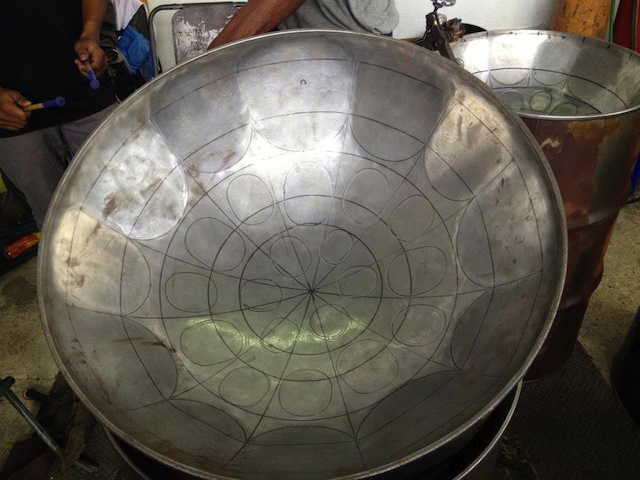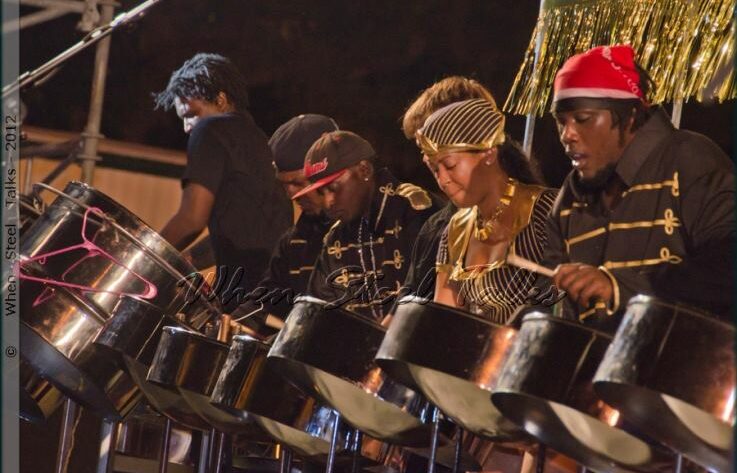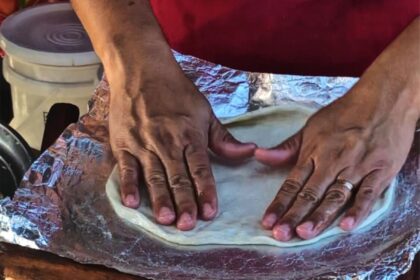
The national instrument of Trinidad & Tobago is the steelpan, or steel drum. Crafted from oil drums — although many of these drums never contained oil — these instruments are not actually drums in the membranophone sense, but are steel containers which are struck with a rubber-tipped stick to create beautiful music.

History
Created on Trinidad in the 1930s, the history of the steel pan can be traced back to the 1970s when African slaves were brought to the islands. These slaves brought with them hand drums, which were used during Carnival but were later banned by the British government in 1877 who saw them as offensive. The instruments were replaced with bamboo stamping tubes, with metal containers, kitchen utensils and dust bins being used to create usable instruments and form bands.
After much experimentation, steel band musicians discovered different areas of the drum made different sounds depending if the metal surface was raised or flat. As the major economic export for Trinidad & Tobago is oil and natural gas, it makes sense these instruments would have evolved to use steel gas drums.
Creation
A visit to Gil’s Pan Shop in Trinidad’s Curepe neighborhood allows visitors to see firsthand how these culturally-important instruments are crafted. In one room a man stands with protective headphones on, pounding the flat tops of the steel pans down in a rough but calculated fashion.
Warning: The above video will show you this process; however, it can be uncomfortable on the ears! it is not uncommon for steelpan makers to be hard of hearing of even deaf.
Each note is methodically placed, with the notes on the outer rim being the lower notes and the notes on the curved inside being higher. To make the pan it’s important to have a steady hand to go over the same spots again.
In another room, someone else sits hand tuning the different pans using his ear as well as a metronome to find the perfect sound for each pan.
While to an outsider the banging of steel pan drums may look primitive, it’s actually one of the most innovative ideas in music. Each pan represents a different instrument — cello, guitar, tenor bass, six-bass and quadrophonic, among others — with the ability to create a full orchestra, with a Frontline Pans Section, Mid-Range Pans Section and Background Pans Section.
Experience
At Gil’s, I’m given a small taste of what this sounds like by two “pannists,” or steelpan players, which can be seen in the video above.
In Trinidad & Tobago, there are many places you can see a steel pan band for yourself. Head to the 1,500-seat Port of Spain National Academy for the Performing Arts (NAPA), one of the city’s main performance spaces that focuses mainly on putting on steel pan shows. Additionally, visiting a local panyard can help you appreciate the energetic music in an open-air setting as well as hear some calypso, reggae, jazz, pop and even classical music. Some of these panyards include:
- Amoco Renegades – 138 Charlotte Street, Port of Spain
- BWIA Invaders – Tragarete Road, Woodbrook (Opposite the Queen’s Park Oval)
- Carib Tokyo – 2a Plaisance Road, John John, Laventille
- Desperadoes – Laventille Community Centre, Laventille
- Humming Birds Pan Groove – Fort George Road, St James
- Neal and Massy Trinidad All Stars – 46 Duke Street, Port of Spain
- North Stars – 63 Bombay Street, St James
- Pandemonium – 3 Norfolk Street, Belmont
- Phase II Pan Groove – 13 Hamilton Street, Woodbrook
- T&TEC Power Stars – 14 Western Main Road, St James
You may also want to visit during Carnival when Panorama, Trinidad & Tobago’s annual steel drum competition, takes place. Passionate locals go wild cheering on their favorite pan bands, and you can watch live performances from different categories of steel pan bands.
And if you want to experience steel pan drumming as well as the other offerings of Trinidad, hiring a local guide is a great idea. We recommend Mr. Nick of Sensational Tours (email: SensationalTours (at) gmail (dot) com), who can tailor an experience based on your desires. You can either let him know specific activities and attractions of interest, or tell him about yourself to let him tailor the tour.
Jessica Festa
Latest posts by Jessica Festa (see all)
- A Culturally-Immersive Adventure In Mongolia’s Altai Mountains - Jul 8, 2023
- This Recipe Sharing Platform Supports Women In The Culinary Industry (Labneh Recipe Included!) - Nov 5, 2020
- Hiking The Mohare Danda Community Eco-Trek In Nepal - Jun 3, 2020
- 6 Important Questions For Choosing A Responsible Yoga Retreat - May 18, 2020
- How To Create & Grow A Profitable Blogging Business (Ethically) - Jan 18, 2020





